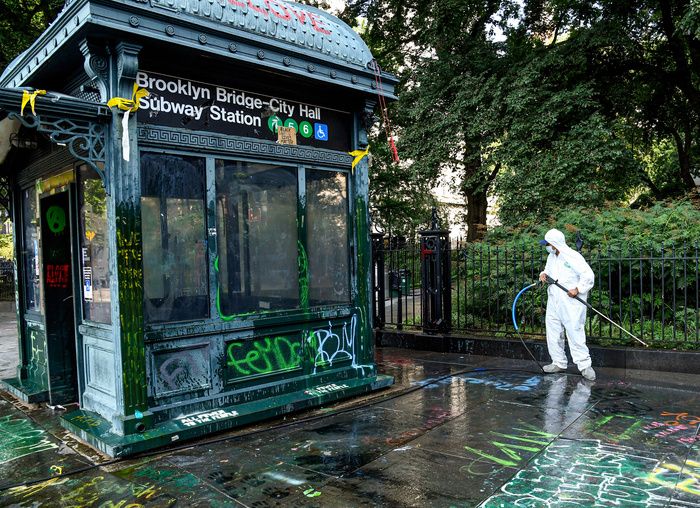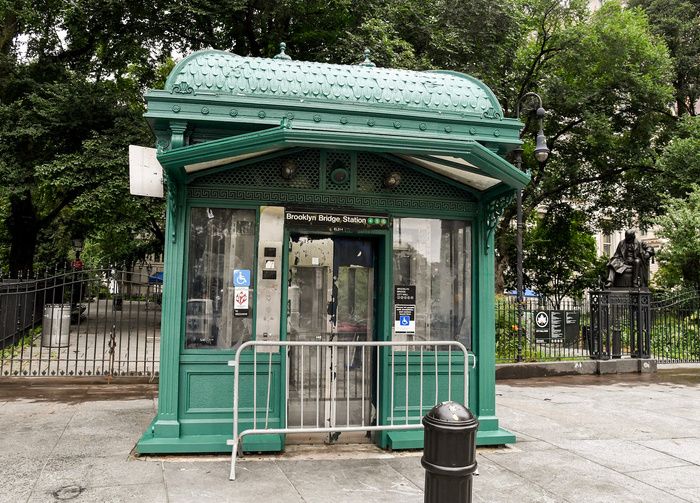NYC’s Forgotten ‘War on Christmas Trees’
Discover how an obscure holiday crackdown affects festive street vendors today!


Equipped with power washers, brooms, and new light bulbs, MTA workers set out to restore the Centre Street entrances of the Brooklyn Bridge-City Hall subway station to tip-top shape. The clean-up crew arrived less than twenty-four hours after police dispersed protesters from the Occupy City Hall encampment. After an entire day of washing, the subway stair and elevator entrances were free of graffiti and debris.

Photo: Marc A. Hermann / MTA New York City Transit
The detritus of the nearly month-long encampment outside City Hall was cleared away by a thirty-one person team. In addition to carefully scrubbing away dirt and graffiti, which was sitting on the subway surfaces for weeks, workers also fixed damaged station elements, including an iconic green subway entrance globe. It took 452 person-hours, lots of elbow grease, and $17,000 to restore the entrances.
“Ideally our crews are using their cleaning expertise to disinfect the station and trains for COVID-19 prevention but this unfortunate situation required a herculean cleaning effort and our team stepped, as they always do,” said Sarah Feinberg, Interim President of New York City Transit.

Photo: Marc A. Hermann / MTA New York City Transit
City Hall is the birthplace of New York City’s subway system. The long-abandoned City Hall Station was the first stop on the Interborough Rapid Transit line which opened in 1904. You can find many historical remnants of station above ground. The now sparkling clean elevator entrance of the current station is a replica of an original 1904 kiosk.
 Photo: Marc A. Hermann / MTA New York City Transit
Photo: Marc A. Hermann / MTA New York City Transit
 Photo: Marc A. Hermann / MTA New York City Transit
Photo: Marc A. Hermann / MTA New York City Transit
Next, check out The Top 10 Secrets of NYC’s Abandoned City Hall Subway Station and The Top 20 Secrets of the NYC Subway
Subscribe to our newsletter